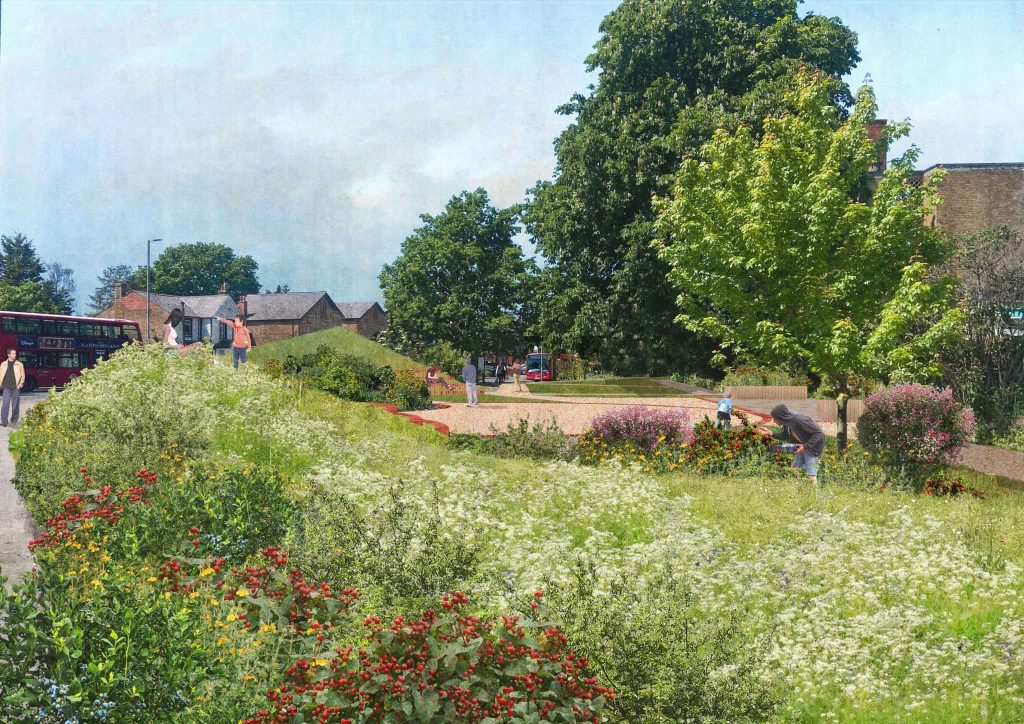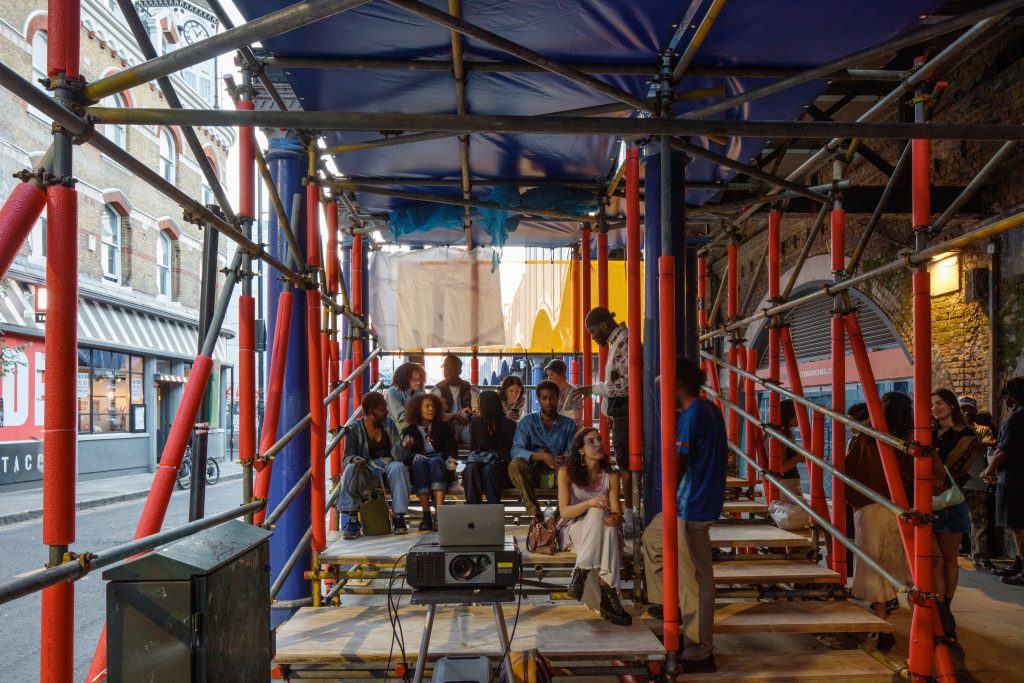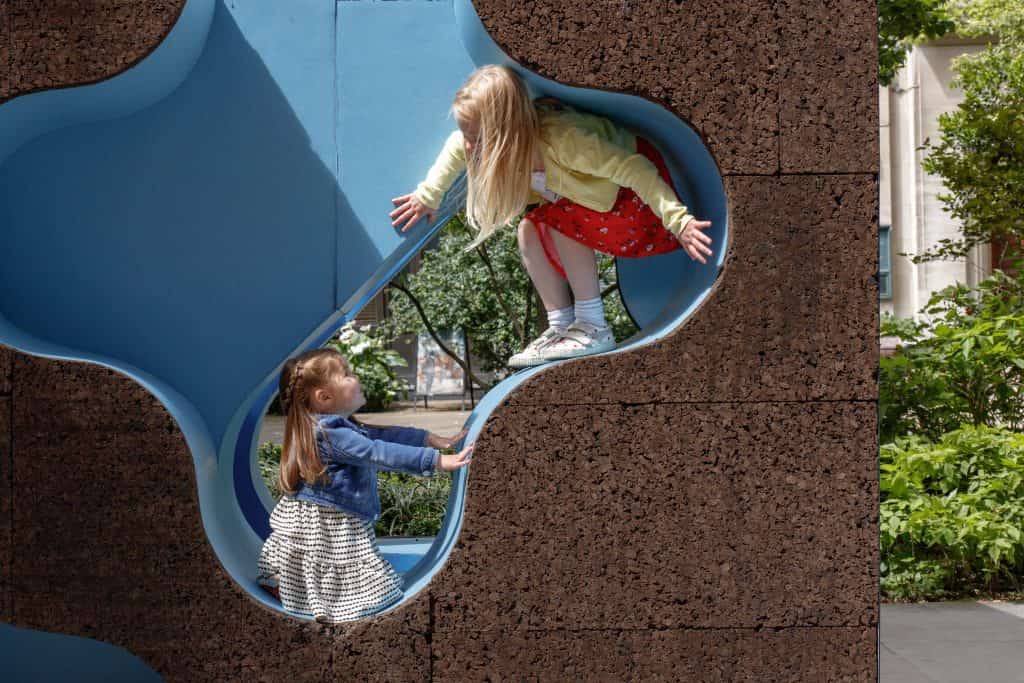Common Ground by Urban Radicals and Saqqra
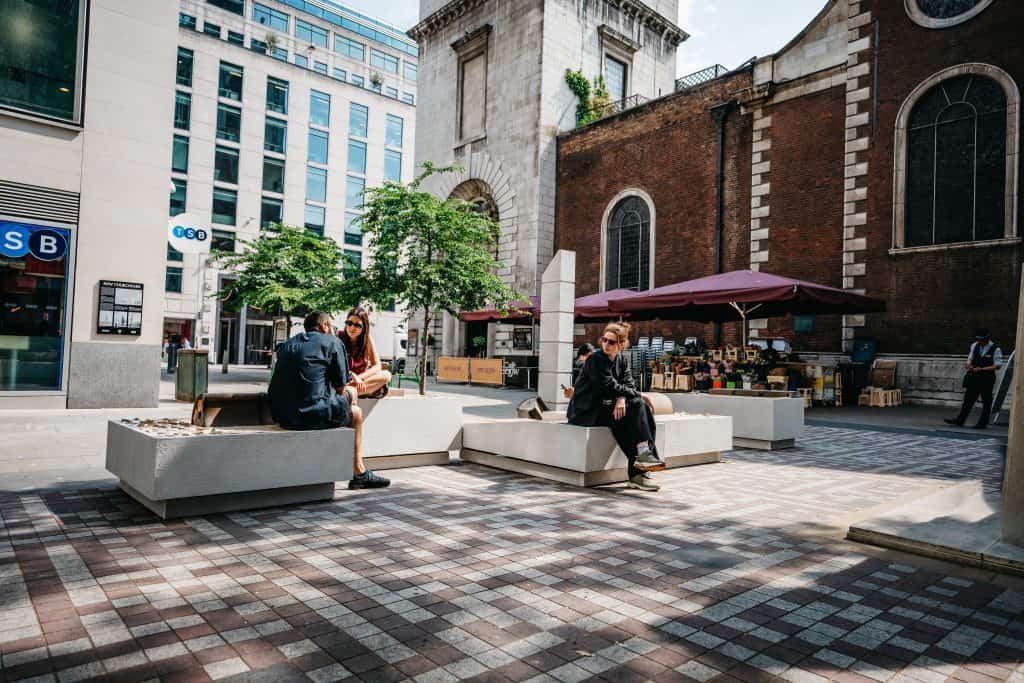 Common Ground © Joe Howard
Common Ground © Joe Howard
Common Ground explores access and sustainability in public realm design through materiality, utilising various salvaged components including crushed aggregates from ceramic building elements and brick ‘rejects’ which are salvaged and cast in lime to form seating surfaces; ceramic cornices, coping blocks and other traditional building elements which have been discarded during recent restoration works; and surplus facade cladding tiles produced during a large manufacturing run for a building.
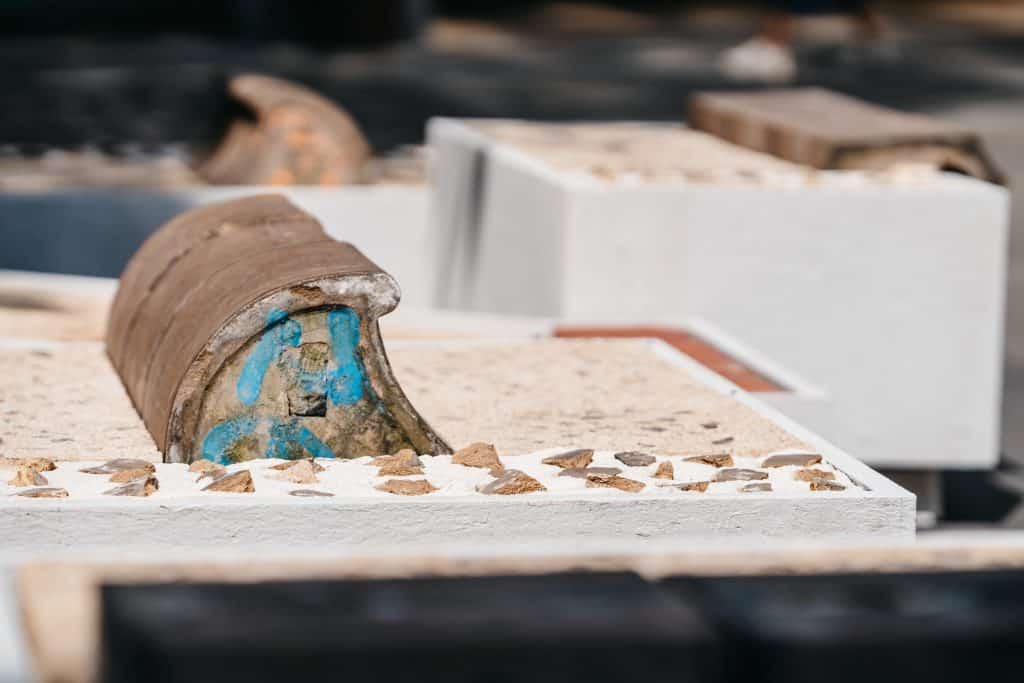 Common Ground © Joe Howard
Common Ground © Joe Howard
The design starts from a response to the site’s history of reclamation and layered reconstruction, utilising materials salvaged from sites of manufacture around the UK. After its destruction, Sir Christopher Wren rebuilt St Mary-le-Bow church in 1680 with a tower that used the Roman gravel roadway as its foundation, a legacy the installation aims to bring attention to for its ethos of radical re-use.
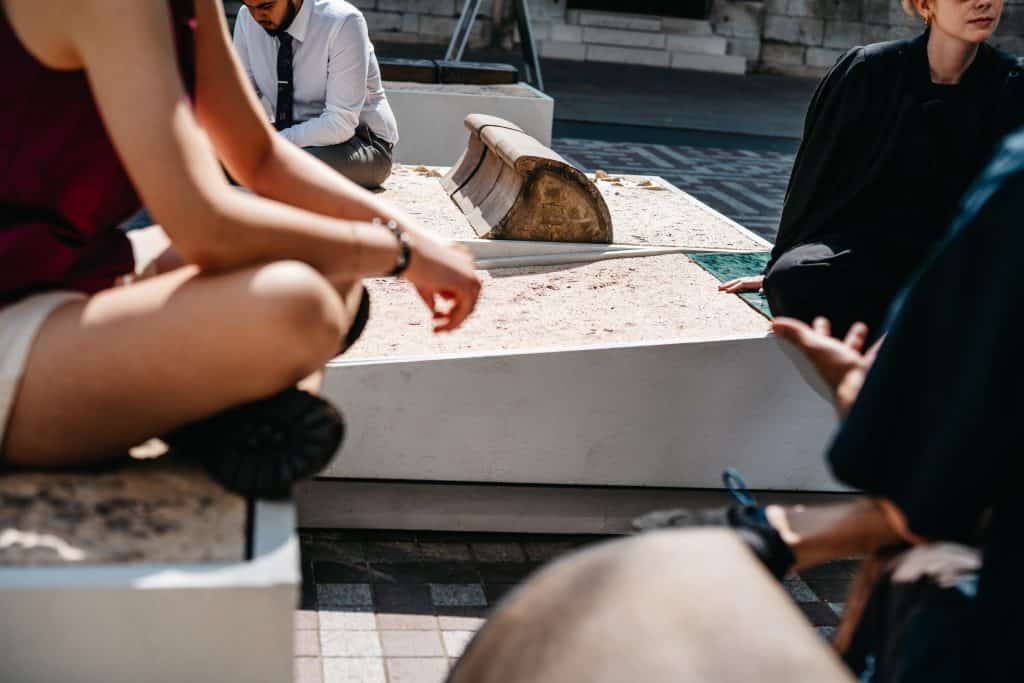 Common Ground © Joe Howard
Common Ground © Joe Howard
The composition of the installation subtly utilises accessible design motifs — such as the ramp or turning circle to create a textured tapestry reminiscent of the tactile surfaces guiding the visually impaired throughout the city. Often latent in everyday life, the installation raises these to a level that users can touch and engage with, and re-interprets them in a range of smooth to rough finishes.
Afterlife
As part of the installation, two ramps have been cast with the intention of being donated to St Mary-le-Bow after the project is complete, ensuring wheelchair access to the central aisle of the church.
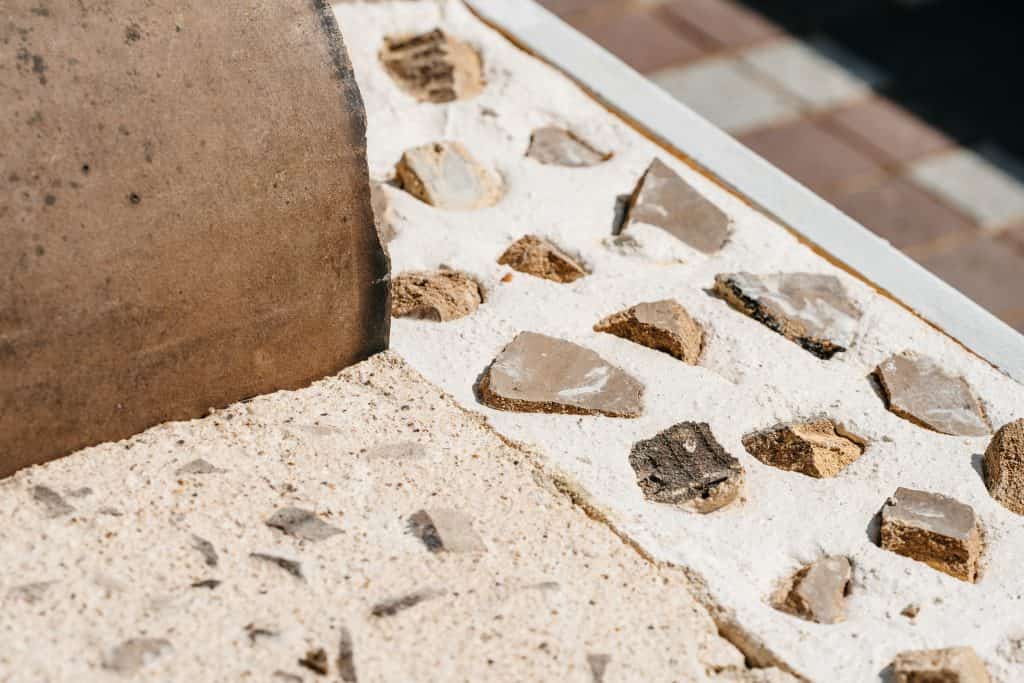 Common Ground © Joe Howard
Common Ground © Joe Howard
Press


